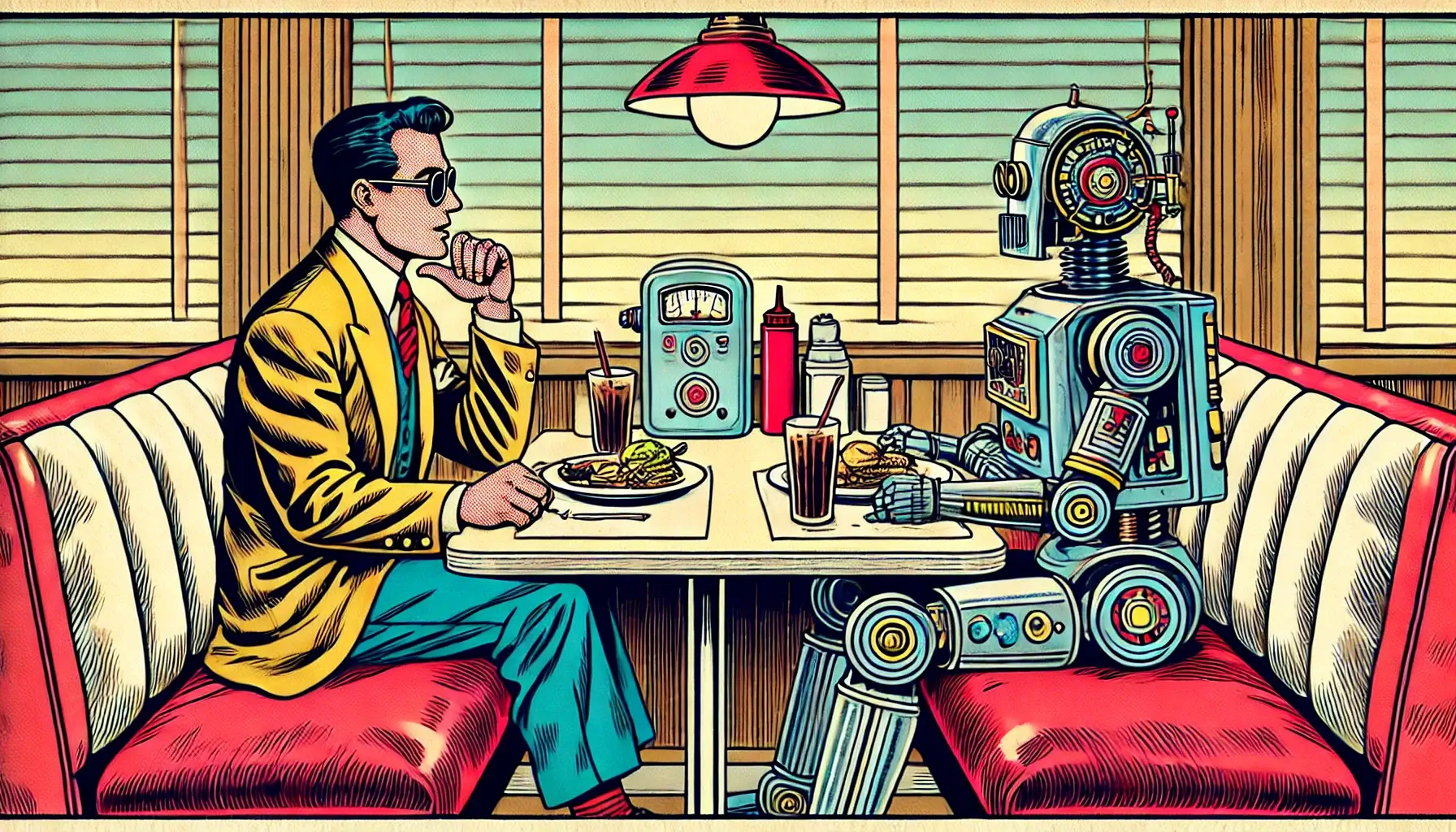Cybernetics and Symbiosis: Humanity Prevails In the End

Rejecting Transhumanism, Wholesale
The relationship between humans and technology has always been one of deep interconnection, but in the modern world, that relationship is accelerating in ways few could have predicted. Cybernetics, the study of control, feedback, and communication between humans and machines, is often framed as a path toward greater efficiency, intelligence, and even a so-called “evolutionary leap.” But the reality is far more nuanced.
Not all human-machine interactions are the same. The way we integrate technology into our lives can range from mutualistic (beneficial to both) to parasitic (where one entity dominates or drains the other). Transhumanists, those who advocate for the literal merging of humans and machines, see this relationship as an inevitable and desirable progression. They believe the future lies in brain chips, AI-assisted cognition, and ultimately, a post-human existence.
I reject that vision entirely. While I acknowledge the value of technology, I believe that the goal should be homeostasis, a state in which humans retain their core humanity while using technology as a tool – not as a force that reshapes our fundamental nature. Let’s explore how cybernetics began, the different states of human-machine symbiosis, and why transhumanism is a dangerous distortion of technological progress.
The Origins of Cybernetics: Control, Feedback, and Balance
Cybernetics emerged as a field in the 1940s, spearheaded by Norbert Wiener, who sought to understand how systems – whether biological, mechanical, or social – could regulate themselves through feedback loops. His work laid the foundation for modern computing, artificial intelligence, and automation.
The original goal of cybernetics was not to turn humans into machines but to refine how we interact with them. It was about improving control systems, understanding communication patterns, and ensuring that machines served human needs. Over time, however, cybernetics evolved from a technical discipline into a broader ideological movement, one that transhumanists have taken to an extreme.
Symbiosis Between Humans and Machines
Symbiosis, in biology, refers to the way two entities interact – sometimes beneficially, sometimes harmfully. The same applies to humans and technology. Our relationship with machines isn’t monolithic; it exists on a spectrum.
Mutualism (Healthy Integration)
This is the ideal state – where humans and technology work together to enhance life without diminishing what makes us human. Examples include:
- AI-assisted workflows that free people from tedious tasks so they can focus on creativity.
- Medical advancements like prosthetics and AI-assisted diagnostics that restore or improve health without fundamentally altering identity.
- Automation that increases efficiency without making humans obsolete.
The key here is homeostasis – a balance where humans remain distinctly human while benefiting from technology.
Commensalism (Neutral Use)
This is where technology exists in our lives but doesn’t significantly alter us. Think of:
- Smartphones and the internet – tools that connect us but don’t necessarily redefine us.
- Personal AI assistants that provide convenience but don’t interfere with autonomy.
- Digital tools that support, rather than replace, human cognition and decision-making.
Many people exist in this category, using technology as a resource without fully immersing themselves in it.
Parasitism (Transhumanism and the Machine Mindset)
This is where technology stops being a tool and starts taking over. This is the realm of transhumanism – the belief that humans should merge with machines, that doing so is an evolutionary imperative. It’s also where the problems begin.
Transhumanists frame their vision as progress, but it’s really a form of technological parasitism. Instead of augmenting human life, it seeks to override it. Examples include:
- The push for brain-computer interfaces like Neuralink, which blur the line between thought and computation.
- The belief that AI should dictate human decisions, diminishing free will.
- The idea that the ultimate goal is a post-human existence, where biological limitations are abandoned entirely.
Transhumanism masquerades as evolution, but in reality, it’s a reduction of human experience, not an expansion of it.
The Transhumanist Trap
One of the most insidious aspects of transhumanism is how it presents itself as inevitable. Figures like Elon Musk and Ray Kurzweil argue that merging with machines is the next step in human evolution. But this framing is deeply flawed.
Three Fundamental Problems with Transhumanism
Psychological Detachment
- The more we externalize memory, cognition, and even emotions to machines, the less we engage in human experiences.
- The loss of struggle, effort, and organic thought in favor of algorithmic assistance diminishes what it means to be human.
Loss of Agency
- When we let machines “optimize” decision-making, we risk outsourcing our autonomy.
- Algorithmic governance, AI-assisted cognition, and digital dependency erode personal choice.
The Neuralink Problem
- Brain-machine interfaces might sound revolutionary, but they introduce ethical and existential nightmares.
- Who controls the data from these interfaces? What happens when corporations or governments have direct access to human thought?
- The push for direct neural integration is a step toward turning people into nodes in a system, rather than sovereign individuals.
Transhumanists act as if this is all just the next phase of human development. But it’s not evolution – it’s a redirection engineered by a select few with technological power.
A Better Vision Sees Us For What We Are
The alternative to transhumanism isn’t rejecting technology – it’s controlling its integration. We don’t need to fuse with machines to benefit from them. Instead, we should:
- Prioritize human agency – Technology should serve us, not dictate our decisions.
- Develop ethical frameworks – Adoption of AI, automation, and cybernetics should be carefully regulated with human dignity as the guiding principle.
- Resist parasitic machine ideology – We must recognize when technology is being framed as inevitable and push back.
- Encourage conscious technology adoption – Instead of surrendering to trends, we should be selective about the tech we integrate into our lives.
The future of cybernetics should be about balance, not submission.
A New State of Mind
Technology is here to stay. But how we engage with it is still within our control. The key distinction is whether we use technology to enrich human life or allow it to redefine what it means to be human.
Cybernetics, in its healthiest form, should be about creating systems that work with us, not systems we must integrate into.
Homeostasis – not transhumanism – should be the goal.
